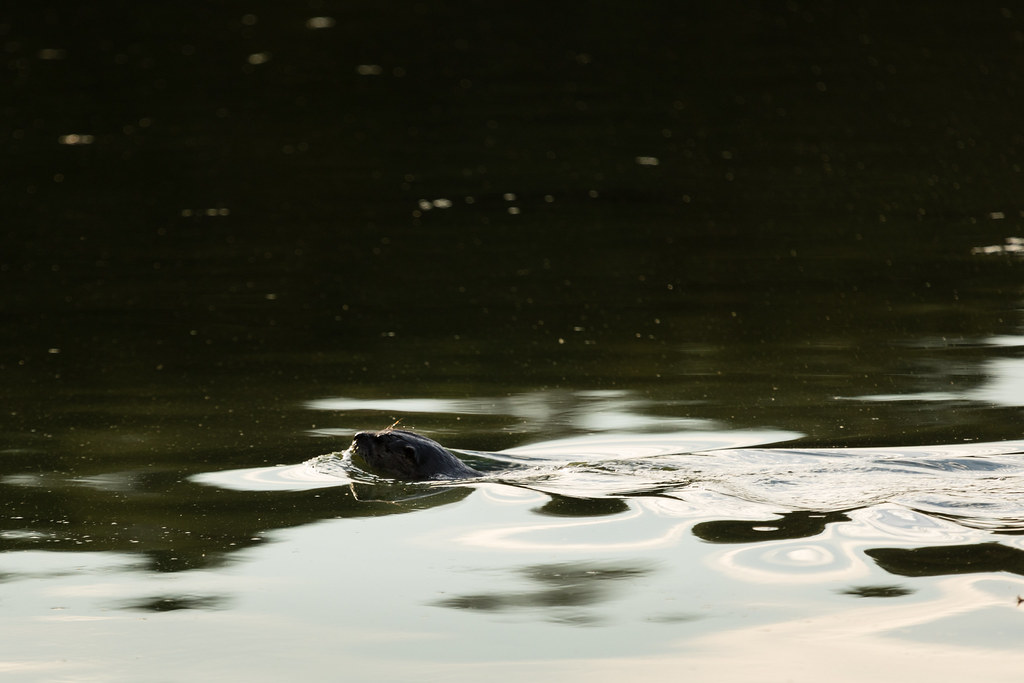River Otter
Lontra canadensis
The river otter is a large, brown, weasel-like mammal found along the shores of the Chesapeake Bay. It can be found along lakes, streams, rivers and marshes throughout the Bay watershed.

Appearance
The river otter has a long, streamlined body with dense brown fur. Its throat and belly are golden or silvery brown. It has a wide, round head with small ears and long, white whiskers. Its feet are webbed. It has a long tail that is thick at the base, and thinner toward the tip and grows to 12 to 19 inches in length. River otters grow 26 to 40 inches in length, not including the tail, and weigh up to 18 pounds. Males are approximately 17 percent larger than females.
Feeding
River otters feed mostly on fish but will also eat frogs, crabs, crayfish, and small mammals such as young muskrats. They uses their long whiskers to detect prey underwater.
Predators
Sometimes preyed upon by larger animals such as birds of prey. River otters are usually able to escape from predators because they are very aware of their surroundings and agile both on land and in the water.
Voice
The river otter is able to communicate with others by whistling, growling, chuckling and screaming.
Reproduction and Life Cycle
Breeding occurs in late winter and early spring. Gestation lasts 2 months, but young may not be born for up to one year after mating because of delayed implantation and development of the newly fertilized eggs. During the time between fertilization and development, the eggs receive just enough nutrients from the female to stay alive.
The female gives birth to a litter of 1 to 4 young in a nesting chamber within her den. Young are born blind and fully furred; their eyes open in one month. Young are weaned at 3 months old and leave the den between 6 months and 1 year old. River otters reach sexual maturity at 2 to 3 years old and live about 8 to 9 years in the wild.
Did You Know?
- Otters are graceful swimmers that can remain submerged for several minutes, dive to 55 feet and swim up to a quarter-mile underwater.
- They are semi-aquatic, spending time both on land and in the water. They make dens with an underwater entrance in a stream bank, a natural hollow (such as under a log), or in another animal’s burrow.
- Otters are mostly nocturnal, with activity peaking from dawn to mid-morning and again in the evening.
- River otters may travel several miles over land to another stream or lake.
- Playful and energetic, river otters often create “rolling spots” where they roll and tumble with each other. They will also slide into the water on paths of snow, dirt or ice.
Sources and Additional Information
- Chesapeake Bay: Nature of the Estuary, A Field Guide by Christopher P. White
- Wildlife Information: Northern River Otter – Virginia Department of Game & Inland Fisheries
- Animal Diversity Web: Lontra canadensis – University of Michigan Museum of Zoology
